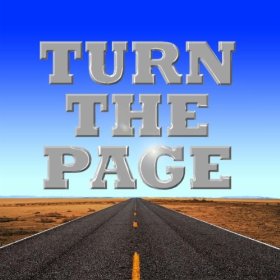A review of iDisorder: Understanding Our Obsession with Technology and Overcoming Its Hold On Us by Larry Rosen.
Tag Archives: PCs
Coming Up Next…
Filed under Uncategorized
Turn The Page
An occasional column about book reviewing.
I. Against the Wind
“What to leave in, what to leave out…” Bob Seger
One thing that all book reviewers have in common is that they do a lot of typing. These days, this means that the prime tool of the trade is not a portable Smith-Corona typewriter or an IBM Selectric but instead a computer – generally a PC Windows-based laptop or an Apple MacBook Air or MacBook Pro. In order to find the best of these writing tools, reviewers like me can spend many hours – sometimes an inordinate amount of time, reading laptop/notebook reviews.
Something that has been surprising to me is how much space in modern computer reviews is devoted to discussing what is largely irrelevant. For example, we’re often told that a particular computer screen is fine for most purposes but that the images on it quickly fade when the screen is moved 45 or more degrees – as if one might close it while still typing. Frankly, I never move the screen while I’m using my machine – I sit straight in front of it and never move either the screen or my body. Which brings us to the next so-called “issue” covered in the majority of these reviews – we’re told that the monitor images tend to detiorate if you’re sitting three or four feet to the left or right of the screen. Really? Who types while sitting a bench-length away from the screen?
Some of the reviewer’s comments are so silly that I wonder where on earth they’re going to end. I fully suspect one day soon I’ll read that a particular computer monitor does not offer good images when the machine is turned off; or when one stands to the back of the screen. Clearly, this is true of 100 percent of television screens but no one would be crazy enough to call it to our attention.
What relevance does this have to the book reviewer? Well, it brought home to me that fact that it’s key to leave in what’s important, while leaving out facts that the average reader would find to be irrelevant. Let’s say, for example, that I’m reading a book – a family novel – in which the female protagonist lives in Denver, Colorado. It might be relevant if I note that the protagonist’s brother is unlikable as he’s a violent womanizer and a drug abuser. It’s likely not so relevant if I write that I didn’t like his character because he’s portrayed as being a fan of the Denver Broncos… Yes, all information is not equally valuable.
Something else about computer reviews is that the reviewer often hedges his or her bets with some cheap disclaimer. Instead of recommending or not recommending a machine, their review might go like this: “The Emerson 15.6″ AMD dual-core laptop comes with a horribly glossy display, has an awful keyboard, a terrible trackpad, a battery that dies within 90 minutes, and is cheaply built. But, if you’re looking for the most economical thing on the market that you can use to surf the web and send e-mails, it may be just the thing for you!” The manufacturer, of course, will quote the last 7 words of the review, hoping that the prospective buyer doesn’t look up the full review.
Again, I think there’s a lesson to be learned here for book reviewers, which is to be true throughout the review. Don’t take a position and then run from it with a potentially face-saving “out”. Provide an opinion and stick with it – do the prospective reader-purchaser a favor by sticking with an honest opinion. Do not hide your recommendation in the weeds.
II. A New Issue
One new issue that’s popped up for me is that I’ll receive a book – actually an Advance Reader’s Copy (ARC) – weeks or months before it’s released and begin to read it. I’ll then communicate with the author’s or publisher’s publicist and ask if I may post a review when I finish reading it. Often the response is that they want me to hold off on posting the review until the release date or very close to it. So I’ll close the book and, unfortunately, often never get back to it. It becomes a lost book, an absent review because I could not write about it when I was ready.
I would love for some of these publicists and/or publishers to consider changing their stances. Whatever happened to the view that some publicity is better than none? And, confusingly, some publishers take the opposite stance – that all of the “buzz” about a book should come prior to the release date: “If a book is not being talked about before its release date, it will most likely be dead on arrival.”
It’s a confusing world out there, including for the lowly book reviewer. LOL
Filed under Uncategorized



